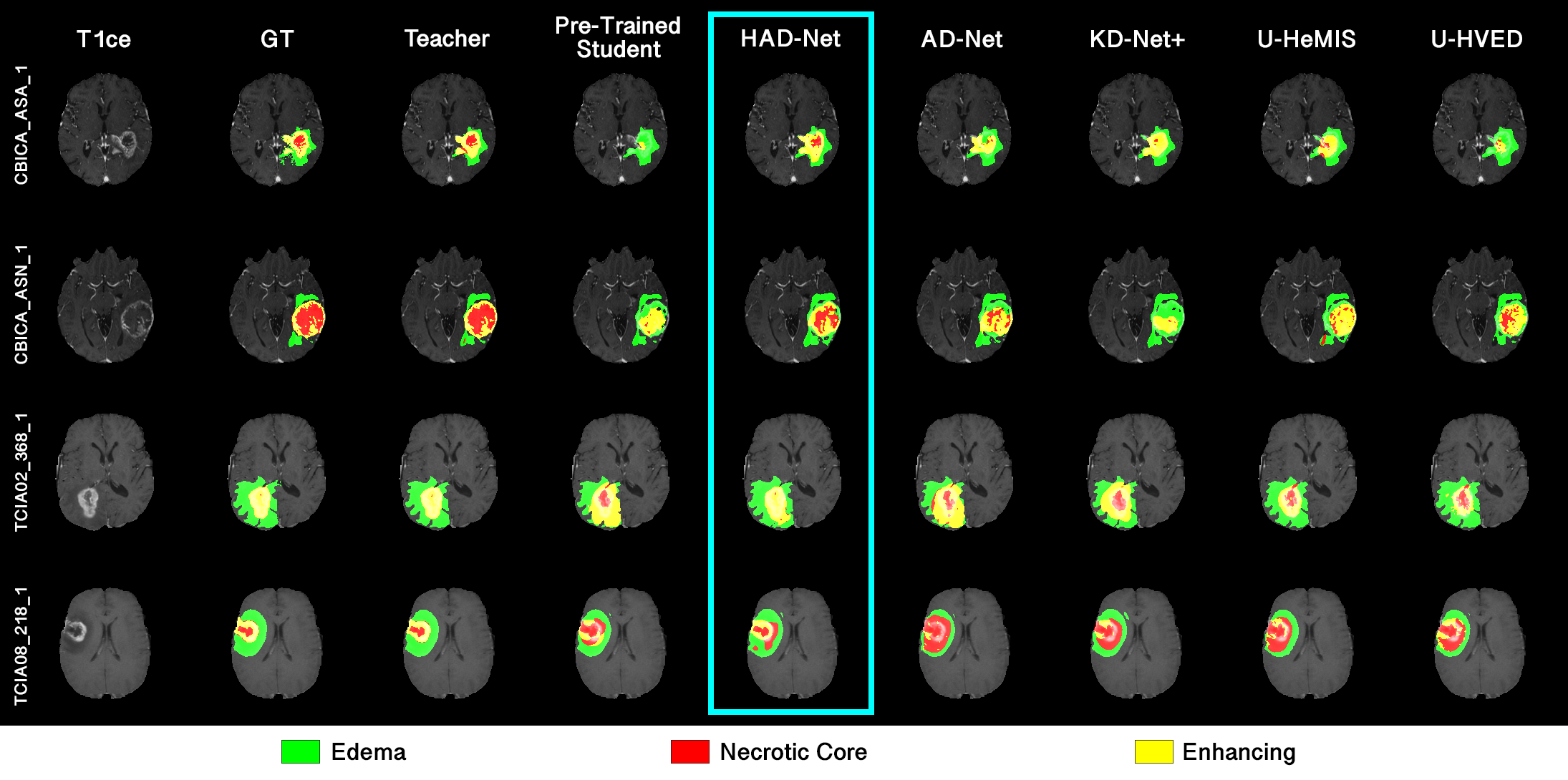HAD-Net: A Hierarchical Adversarial Knowledge Distillation Network for Improved Enhanced Tumour Segmentation Without Post-Contrast Images
Segmentation of enhancing tumours or lesions from MRI is important for detecting new disease activity in many clinical contexts. However, accurate segmentation requires the inclusion of medical images (e.g., T1 post contrast MRI) acquired after injecting patients with a contrast agent (e.g., Gadolinium), a process no longer thought to be safe. Although a number of modality-agnostic segmentation networks have been developed over the past few years, they have been met with limited success in the context of enhancing pathology segmentation. In this work, we present HAD-Net, a novel offline adversarial knowledge distillation (KD) technique, whereby a pre-trained teacher segmentation network, with access to all MRI sequences, teaches a student network, via hierarchical adversarial training, to better overcome the large domain shift presented when crucial images are absent during inference. In particular, we apply HAD-Net to the challenging task of enhancing tumour segmentation when access to post-contrast imaging is not available. The proposed network is trained and tested on the BraTS 2019 brain tumour segmentation challenge dataset, where it achieves performance improvements in the ranges of 16% - 26% over (a) recent modality-agnostic segmentation methods (U-HeMIS, U-HVED), (b) KD-Net adapted to this problem, (c) the pre-trained student network and (d) a non-hierarchical version of the network (AD-Net), in terms of Dice scores for enhancing tumour (ET). The network also shows improvements in tumour core (TC) Dice scores. Finally, the network outperforms both the baseline student network and AD-Net in terms of uncertainty quantification for enhancing tumour segmentation based on the BraTs 2019 uncertainty challenge metrics. Our code is publicly available at: https://github.com/SaverioVad/HAD_Net
PDF Abstract

